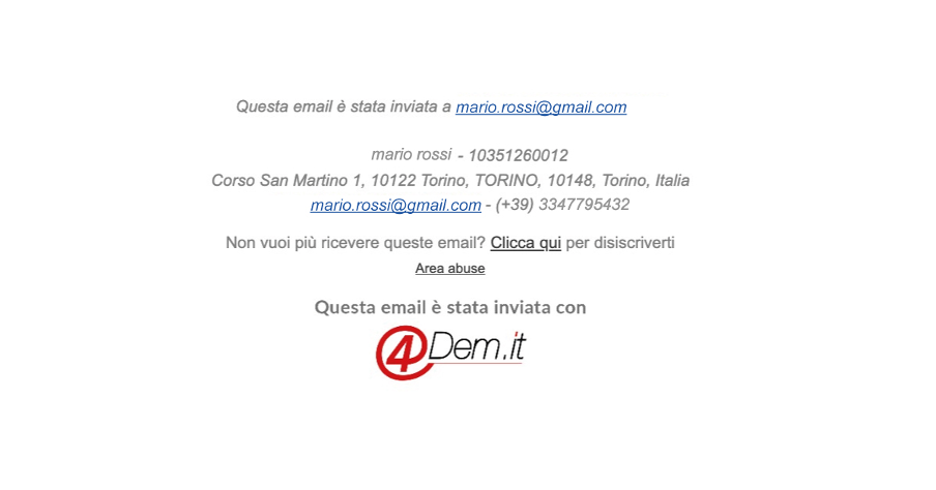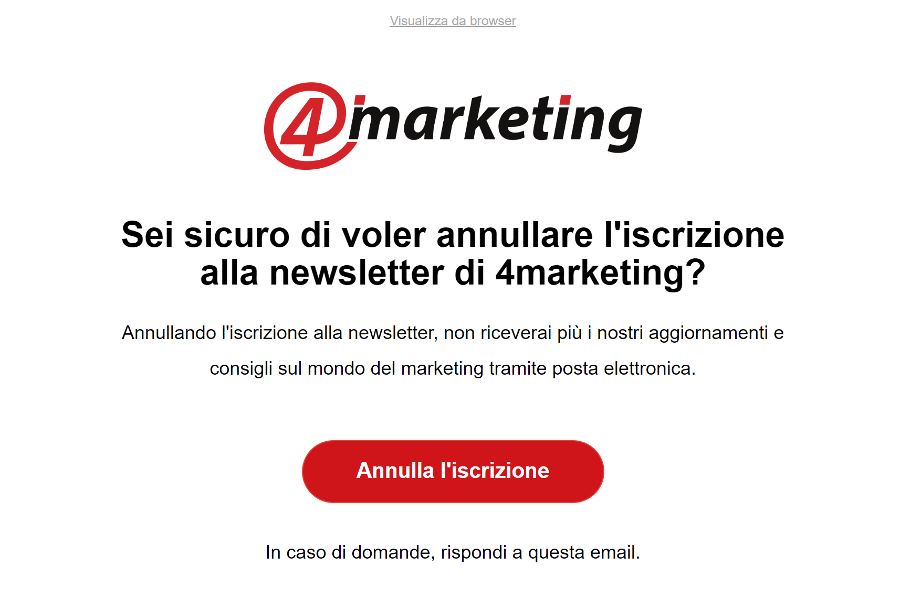The main goal of email marketing and sending newsletters is to build user loyalty and maintain a strong and long-lasting relationship with the user. This is why it is important to build your mailing list with valuable contacts who are genuinely interested in your content.
Within an email marketing campaign, there are two fundamental elements that must be included to best protect the recipient: the sender and the unsubscribe link.
In fact, including the sender’s name in your communications is critical to keeping your emails out of the SPAM folder and improving subscriber retention. Not to mention that many people consider emails without a sender to be suspicious and delete them immediately.
Furthermore, the unsubscribe link is not only crucial to give the user the choice to stop receiving your communications, but is also mandatory to be GDPR compliant.
The role of the sender within an email communication
One of the sender’s roles is to deal with the mail provider, which upon receiving an email, checks several pieces of information to determine whether or not the communication should be placed in the SPAM folder. One of these checks is made on the sender, who must be in order and use an authentication protocol such as SPF, DKIM, DMARC.

It is therefore essential to send through the use of an email marketing platform, such as 4Dem. GDPR-compliant software that allows you to send email campaigns, SMS, create email automation flows, create contact acquisition forms, pop-ups and landing pages quickly and easily.
Another fundamental role is to facilitate the relationship with the recipient. It is important for the user to see the sender of the message, otherwise the email may never be opened or may even encourage unsubscribing. To fulfill this role well, the sender must be clear and understandable to the recipient, so that the user immediately understands who it is.
Are unsubscribing and deleting a contact the same thing?
Many people mistakenly think that when they unsubscribe from a newsletter, their contact is deleted from the mailing list or database. It is good to clarify the difference between unsubscribing and unsubscribing.
When a user clicks the unsubscribe link, the contact remains in the database and is moved to a section with all unsubscribed users.
Otherwise, the contact is deleted by an explicit direct request from the user, which means the data is actually deleted from the database. This is where the GDPR regulation comes into play, which has strengthened the right to be forgotten for users, which consists in “forgetting” the contact from the database.
N.B. If the legal basis – also for the other existing personal data processing operations – is the consent of the data subject, it must be taken into account that this consent cannot be revoked through a more complex and burdensome procedure than the one under which it was given. Therefore, it is the obligation of the data controller to provide itself with a flexible and streamlined procedure that allows the data subject to revoke his or her consent or to exercise the other rights provided for by the GDPR.
Single or double unsubscribe confirmation?
As with list subscription, which can be either double opt-in or single opt-in,
Unsubscribing by the user can also be done in one or two steps.
If you choose the two-step unsubscribe, the user will be taken to an intermediate landing page where they can change their preferences such as:
- frequency of emails;
- set a time limit for receiving communications;
- change the recipient’s email address;
- unsubscribe permanently by entering a reason.
By using this dual unsubscribe mode, you give the user several options before they finally unsubscribe. It is important to provide the user with a clear and easy to understand page.
On the other hand, the single unsubscribe confirmation simplifies the unsubscribe process for the user by responding directly to their need to stop receiving communications.

Tips for Using the Unsubscribe Link
Using the unsubscribe link may seem trivial, in fact many companies underestimate it by giving it little importance. On the other hand, placing the unsubscribe link in the email can help you avoid ending up in junk mail.
Here are a few tips to improve the inclusion of the unsubscribe link in your communications
Simplify unsubscribing
Many companies tend to place the unsubscribe link at the bottom of the newsletter, in the footer. To maximize the transparency of your mailings, we recommend placing the unsubscribe link at the top of your communication to make the process clearer.
One piece of advice is to make it easy for the user to unsubscribe, because the more steps they have to take, the more likely they are to resort to the easiest and quickest method: spamming your communications by lowering your reputation.
Send communications to reactivate contacts
Many subscribers, although they have given their consent to be sent your communications, may not really be interested and unsubscribe anyway.
By virtue of this, it is essential to carry out re-engagement mailings to try to reactivate the contact or, on the contrary, unsubscribe from the mailing list.
Using email marketing software such as 4Dem, you can set up email automation flows that can be activated once a certain period of time (e.g. two months) has passed since the last newsletter sent, perhaps proposing valuable content such as a discount voucher.
In the event that the user still takes no action, the advice is to automatically unsubscribe the contact.
Always allow opt-in changes
According to the GDPR regulations, you have the right to access a page to modify your consent. In this regard, a best practice is to always include the link to the preference center in your emails, where subscribers can set all their preferences for receiving your communications.
